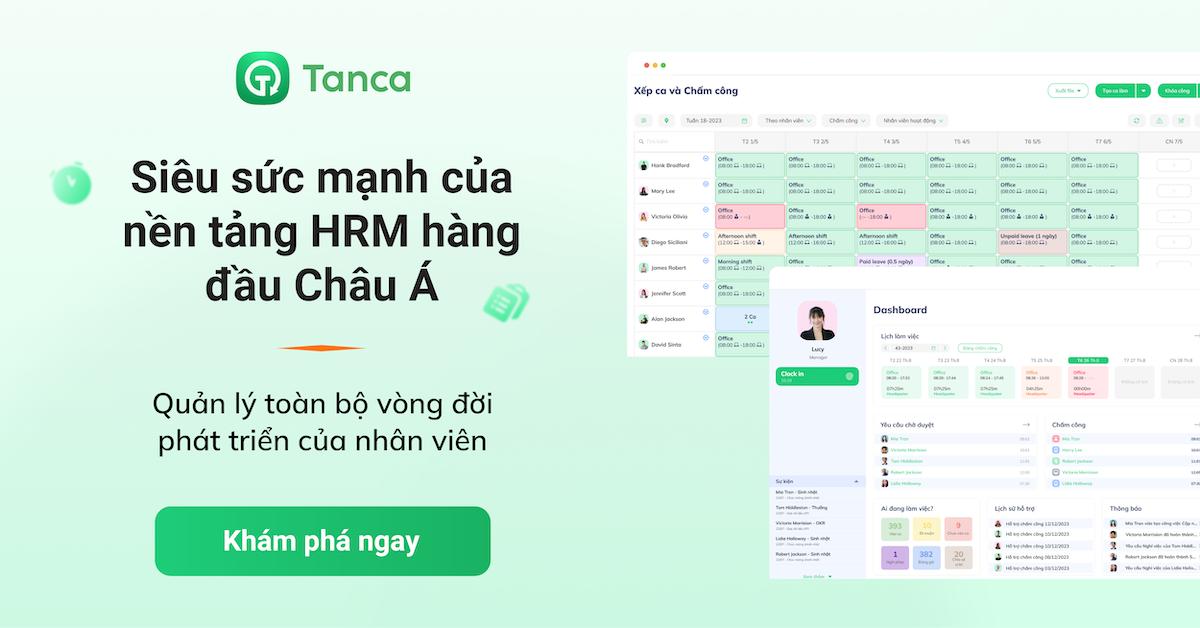HR professionals must have a comprehensive understanding of fringe benefits, as they play a key role in crafting employee compensation packages. Essential benefits such as health insurance, retirement plans, and paid time off greatly affect employee attraction and retention. By remaining informed about trends and legal requirements in this area, HR can design competitive benefits that meet employee needs and align with the organization’s goals, thereby boosting employee satisfaction and promoting a healthy workplace culture.
What Are Fringe Benefits?

Fringe benefits are additional perks or incentives provided by employers to employees beyond their standard salary or wages. These benefits are designed to enhance the overall compensation package and improve employee satisfaction, loyalty, and productivity. They can vary widely depending on the employer's policies, industry standards, and employee needs.
Fringe benefits can be categorized into two main types: mandatory benefits and optional benefits. Mandatory benefits are legally required benefits that employers must provide, such as health insurance, unemployment insurance, and worker's compensation.
For example, under the Affordable Care Act, businesses with 50 or more employees must offer health insurance coverage. Optional benefits, on the other hand, are discretionary benefits that employers may choose to offer. Examples include paid time off (PTO) for vacation or sick leave, retirement plans like 401(k) contributions, tuition reimbursement for educational advancement, employee discounts on products or services, and flexible work arrangements, including remote work options.
Types of Fringe Benefits

Health Benefits
Health benefits are essential components of fringe benefits, encompassing various types of insurance that help employees manage healthcare expenses. This typically includes health insurance plans that cover medical, dental, and vision care, ensuring that employees and their families have access to necessary healthcare services.
Additionally, wellness programs may be offered, which can include gym memberships, mental health counseling, and initiatives aimed at promoting a healthier lifestyle among employees.
Retirement Plans
Retirement plans are another crucial aspect of fringe benefits, providing employees with financial security for their future. Employers often offer pension plans, such as 401(k) plans in the United States, which allow employees to contribute a portion of their salary toward retirement savings.
Paid Time Off
Paid time off (PTO) is a significant benefit that allows employees to take breaks from work without losing income. Companies typically provide a set number of vacation days each year, enabling employees to rest and recharge. In addition to annual leave, many organizations offer family and medical leave, which allows employees to take time off for family care or health-related issues.
Allowances and Support
Allowances and support programs are designed to assist employees with various expenses related to their work. For instance, transportation allowances can help cover commuting costs, such as public transportation fares or parking fees.
Additionally, education assistance programs may be provided, which cover training or educational expenses, including tuition reimbursement or scholarships, encouraging employees to develop their skills and advance their careers.
Other Benefits
Other benefits can vary widely but often include perks that enhance the overall employee experience. For example, some companies provide vehicles for employees to use for both work and personal purposes, which can be a significant advantage. Employee discounts on products or services offered by the company are also common, allowing employees to save money on purchases.
Furthermore, recognition programs that reward outstanding performance, such as bonuses or special awards, can motivate employees and foster a culture of appreciation within the workplace.
Tax Considerations

Taxable Fringe Benefits
Fringe benefits are generally considered taxable income unless specifically exempted by the IRS. Employees must include the fair market value of these benefits in their taxable income for the year. Common examples of taxable fringe benefits include:
- Bonuses: Cash bonuses are fully taxable.
- Athletic Club Memberships: Memberships provided by employers are considered taxable.
- Personal Use of Employer-Provided Vehicles: The value of personal use is taxable.
- Group Term Life Insurance: Coverage exceeding $50,000 is taxable.
- Catered Meals: Meals provided by the employer are generally taxable unless they meet specific criteria.
- These taxable benefits require employers to report their value on the employee's W-2 form, and the appropriate taxes must be withheld.
Non-Taxable Fringe Benefits
Certain fringe benefits are exempt from taxation, meaning they do not have to be included in an employee's taxable income. The IRS provides a list of non-taxable fringe benefits, which includes:
- Accident and Health Benefits: Premiums paid by employers are generally not taxable.
- Achievement Awards: Awards up to $1,600 for qualified awards are tax-exempt.
- Adoption Assistance: Financial support for adoption is typically tax-free.
- De Minimis Benefits: Small perks like occasional snacks or holiday gifts that are infrequent and of minimal value.
- Educational Assistance: Up to $5,250 per year can be provided tax-free.
- Employee Discounts: Discounts on products or services offered by the employer can be exempt.
- Employer-Provided Cell Phones: If primarily for business use, these are generally not taxable.
- Meals: Meals provided on the business premises or for business purposes can be tax-exempt.
- Transportation Benefits: Commuting benefits can be tax-free up to certain limits.
These non-taxable benefits can enhance employee satisfaction without increasing their tax burden, making them attractive options for employers looking to provide additional value to their employees.
Why Do Companies Offer Fringe Benefits?
Companies offer fringe benefits for several strategic reasons, each contributing to a more attractive and supportive workplace.
Attracting Talent
Fringe benefits play a crucial role in attracting skilled professionals in a competitive job market. A well-rounded benefits package can differentiate a company from its competitors, making it more appealing to job seekers. For instance, Google offers a range of benefits, including free meals, on-site healthcare, and generous parental leave, which have helped the company attract top talent in the tech industry.
Retaining Employees
Once employees are onboarded, fringe benefits become vital for retention. A comprehensive benefits package enhances job satisfaction and fosters loyalty among employees. Studies show that a generous benefits scheme can significantly increase the likelihood of employees staying with a company. When employees feel valued and supported through benefits like paid time off, wellness programs, and childcare assistance, they are more likely to remain committed to their employer, reducing turnover costs and maintaining a skilled workforce.
Boosting Engagement
Fringe benefits also contribute to higher employee engagement. When employees perceive that their employer cares about their well-being, they tend to be more motivated and productive. Benefits such as recognition programs, professional development opportunities, and health-related perks can make employees feel appreciated and valued. For instance, Salesforce encourages employees to take time off for volunteering, which has been shown to improve morale and teamwork.
Enhancing Employee Wellness
Investing in employee wellness through fringe benefits is not only beneficial for employees but also for the company’s bottom line. Health-related benefits, such as gym memberships and mental health support, can reduce absenteeism and healthcare costs. When employees are healthy and well-supported, they are less likely to take time off due to illness, allowing them to contribute more effectively to the organization.
Building a Positive Company Image
Offering fringe benefits helps companies build a positive employer brand. Organizations known for investing in their employees’ well-being attract more applicants and enhance their reputation in the marketplace. A strong company image can lead to increased customer loyalty, as consumers are often inclined to support businesses that prioritize their workforce.
Considerations for Offering Fringe Benefits
When offering fringe benefits, keep a few things in mind to make sure your package hits the mark. First, think about your industry. Tech companies might focus on flexible work and wellness perks, while retail businesses could prioritize employee discounts and flexible schedules.
Next, consider your team’s demographics. Younger employees might appreciate tuition help and remote work options, while older team members may value solid retirement plans and health insurance. Tailoring benefits to your team’s needs can really boost satisfaction.
Also, be mindful of your budget. Some benefits, like health insurance, can be pricey, but others, like flexible work hours, might be easier on the wallet. Small businesses can look into cafeteria plans that let employees pick what suits them best within a budget.
Check out what your competitors are offering too. It helps to stay competitive by offering benefits that stand out. And don’t forget about the legal side—make sure you’re aware of any tax implications and compliance issues.
Finally, ask your employees what they really want. A quick survey or chat can go a long way in shaping a benefits package that works for everyone. And make sure you’re clear in communicating what’s available so everyone gets the most out of the benefits offered.
FAQs
Does PTO count as a fringe benefit?
Yes, paid time off (PTO) is considered a fringe benefit. PTO includes vacation days, sick leave, and personal days that an employer provides to employees in addition to their regular salary or hourly wages. While PTO is not mandatory under the Fair Labor Standards Act (FLSA), it is a common fringe benefit offered by many employers to attract and retain talent.
Is overtime classified as a fringe benefit?
No, overtime pay is not considered a fringe benefit. Overtime pay is additional compensation for hours worked beyond the standard workweek, according to labor laws. It is part of an employee's regular wages and not a supplemental benefit provided by the employer.
Which fringe benefits are tax-exempt?
The IRS maintains a list of fringe benefits that are exempt from taxation, including:
- Accident and health benefits
- Achievement awards
- Adoption assistance
- Athletic facilities
- De minimis (minimal) benefits
- Dependent care assistance
- Educational assistance
- Employee discounts
- Employer-provided cell phones
- Group-term life insurance coverage
- Health savings accounts (HSAs)
- Lodging on business premises
- Meals
- Retirement planning services
- Transportation (commuting) benefits
- Tuition reduction
- Working condition benefits
How do you determine the value of fringe benefits?
Fringe benefits are generally valued at their fair market value, which is the amount the employee would pay for the same benefit at retail. For example, if an employer provides a company car for personal use, the taxable value would be the percentage of the car's fair market value attributed to personal use.
Can fringe benefits be given as cash?
Yes, fringe benefits can be provided in the form of cash or cash equivalents, such as bonuses, allowances, or reimbursements. However, cash fringe benefits are typically considered taxable income for the employee, unless they are specifically excluded by the IRS.
Conclusion
In today's competitive job market, offering a comprehensive fringe benefits package is essential for attracting and retaining top talent. As highlighted by Tanca, these benefits are key to boosting employee satisfaction, loyalty, and workplace morale. By understanding different types of fringe benefits—both taxable and non-taxable—employers can tailor their offerings to meet diverse workforce needs while staying compliant with tax laws.
Investing in fringe benefits shows a commitment to employee well-being and can reduce turnover, ultimately benefiting your bottom line. Businesses should evaluate their benefits strategy carefully, considering industry standards, employee demographics, and budget. This approach helps create a compelling package that supports business goals and fosters a positive work culture.
If you're looking to enhance your benefits strategy, Tanca offers a range of HR tools to streamline processes and boost employee engagement. With customizable options for time tracking, payroll, and performance management, Tanca helps businesses unlock the full potential of their benefits programs. Contact Tanca today to learn how our solutions can help you build an effective fringe benefits strategy that drives success in the job market.








